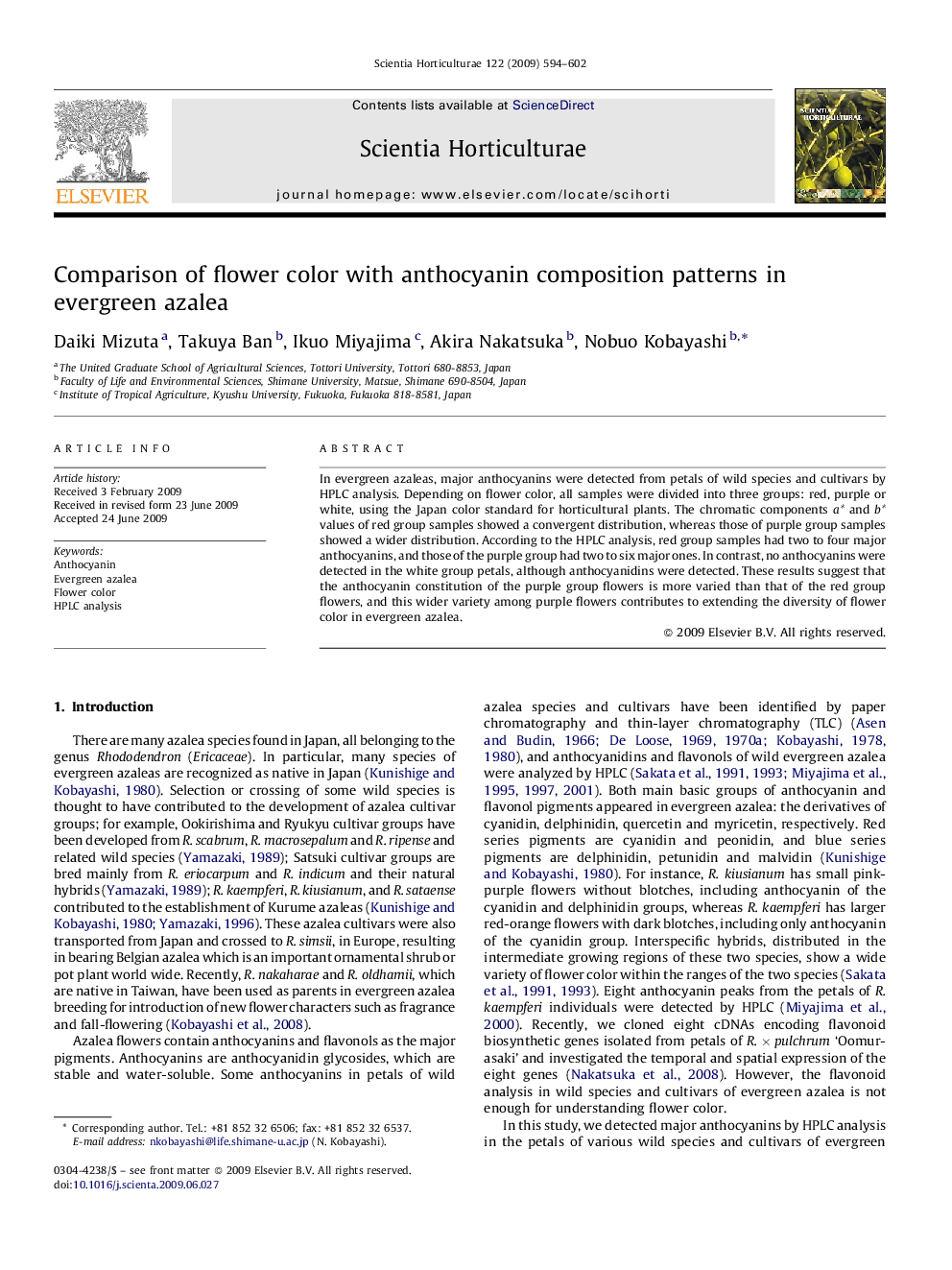| Article ID | Journal | Published Year | Pages | File Type |
|---|---|---|---|---|
| 4568749 | Scientia Horticulturae | 2009 | 9 Pages |
In evergreen azaleas, major anthocyanins were detected from petals of wild species and cultivars by HPLC analysis. Depending on flower color, all samples were divided into three groups: red, purple or white, using the Japan color standard for horticultural plants. The chromatic components a* and b* values of red group samples showed a convergent distribution, whereas those of purple group samples showed a wider distribution. According to the HPLC analysis, red group samples had two to four major anthocyanins, and those of the purple group had two to six major ones. In contrast, no anthocyanins were detected in the white group petals, although anthocyanidins were detected. These results suggest that the anthocyanin constitution of the purple group flowers is more varied than that of the red group flowers, and this wider variety among purple flowers contributes to extending the diversity of flower color in evergreen azalea.
